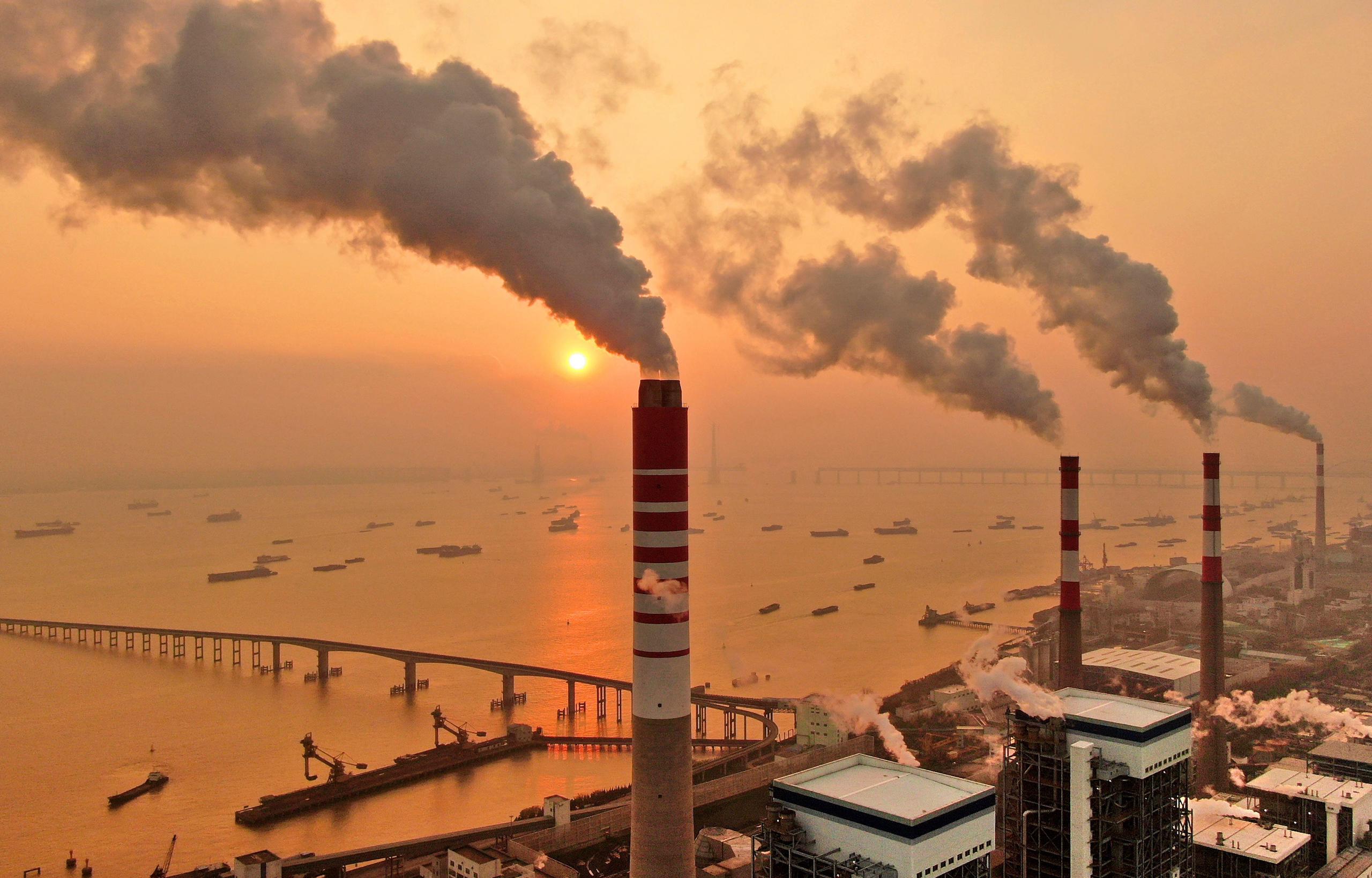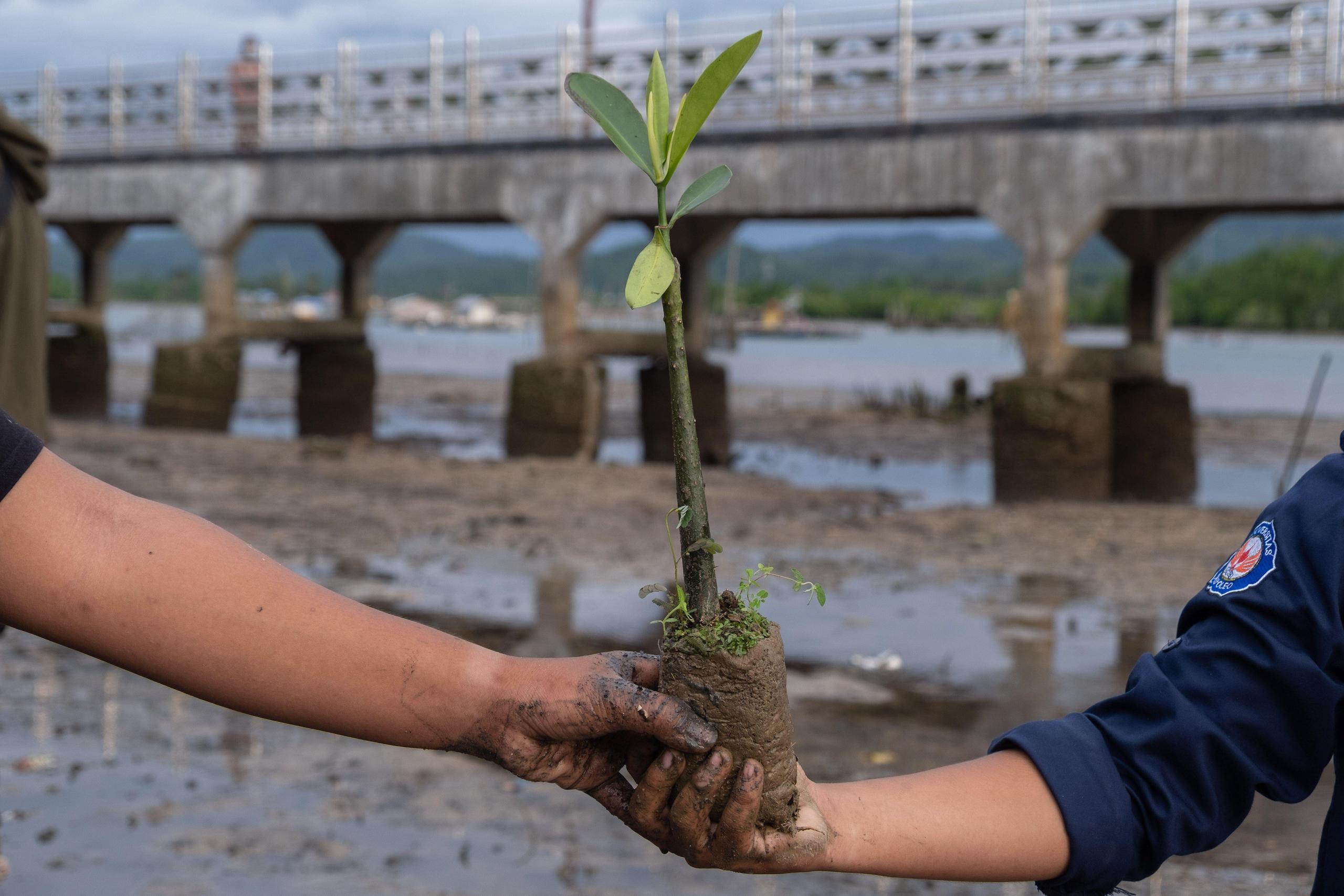Carbon markets are increasingly important to efforts to control global warming. By pricing a tonne of carbon, markets encourage heavily emitting entities to innovate to reduce emissions. They can also incentivise actions, such as ecosystem restoration, that absorb emissions.
A number of national and regional carbon markets are currently in operation, but they have not yet been comprehensively linked up. How will the issue of international carbon markets play out at the upcoming COP28 climate negotiations? And what role will China play?
Finalising the mechanisms for global carbon markets will be high on the agenda at the 28th conference honouring the UN’s Framework Convention on Climate Change (UNFCCC). Representatives from more than 200 nations are expected to use COP28 – taking place in Dubai for two weeks from 30 November – to further refine these platforms for emissions trading, and speed up their adoption across the globe. However, the misalignments between such negotiations and real-world progress on connecting carbon markets will make this a thorny issue.
The market mechanisms conceived in Paris
Article 6 of the 2015 Paris Agreement covers international trade in carbon credits, with the overall aim of reducing emissions. This could happen, for example, when a developed country buys credits from a developing country for sequestering carbon by reforesting a large tract of land.
The future of global carbon markets lies specifically in Article 6.2 and Article 6.4, which will feature prominently at the COP28 negotiations.
Article 6.2 provides a vision for linking up different international emissions trading schemes with an accounting system to avoid the double counting of carbon credits. It would allow countries to flexibly trade carbon reductions and removals, and enable countries (or even companies) to help meet their emission-reductions commitments. The traded credits are known as Internationally Transferred Mitigation Outcomes (ITMOs).
Meanwhile, Article 6.4 establishes a mechanism, and a supervisory body, to enable countries to purchase carbon credits linked to projects that reduce emissions in other countries. Its aim would be to boost emission reductions in the host country that can then contribute to the buyer country’s reductions, to encourage sustainable development, and to “deliver an overall mitigation in global emissions”.
Both ITMOs and the 6.4 mechanism are project-based, with ventures taking place in fields such as ecosystem conservation or sustainable agriculture. Any country can purchase credits through these mechanisms, regardless of their development status.

Implementing ITMO trading and the 6.4 mechanism
While Article 6’s ITMOs are already being traded globally, the credits generated under its 6.4 mechanism (also called A6.4ER) are still awaiting regulations and a centralised registry. The negotiation of these details will continue at COP28.
The 6.4 mechanism also requires participating countries to develop a national institutional framework and a designated national authority to evaluate and coordinate projects. As of 15 November, 65 countries had put the necessary framework in place and shared their designated authority with the UNFCCC secretariat.
There are currently 137 pilot ITMO trading projects. For example, Switzerland and Singapore are procuring ITMOs from countries such as Ghana, Peru and Thailand. These projects range from climate-smart agriculture to electric-car manufacturing. Ghana has the highest number of such collaborations underway, while Suriname is currently issuing ITMO credits through forestry projects.
For a pilot project to begin trading, it must be authorised by the host country, and that requires specific mitigation outcomes to be established. Three pilot projects have received declarations of authorisation.
In a move that could see it become an international carbon trading broker, Japan established the Joint Crediting Mechanism. This is planned to be used as a bilateral trading platform for ITMOs, wherein Japan would procure ITMOs from developing countries and then trade them on an open market. Japan had engaged with 28 countries through this platform, including Vietnam, Sri Lanka and Mexico. By contrast, China and the US have yet to take any action regarding Article 6.2 and ITMOs.
Despite the initial trading, there are ambiguities that need ironing out at COP28. For example, Article 6 dictates that ITMOs can only be used towards current national climate plans (known as Nationally Determined Contributions, or NDCs), which will mostly expire in 2030. This means the ITMO supply could dry up and lead to low liquidity and pricing bottlenecks in the carbon market.
Nationally Determined Contributions (NDCs)
The Paris Agreement requires every signatory party to commit to emissions reductions and climate adaptation targets. Submitted every five years, a party’s NDCs are expected to become more ambitious over time.
Other obstacles to the expansion of ITMO trading include the associated credit risks for private-sector entities involved in ITMO transactions, reporting and authorisation details, and the lengthy bilateral agreement process outlined by Article 6.2.
COP28 negotiations might solve some of these ambiguities but it is likely to be some time before ITMOs are traded widely.
Article 6.4’s mechanism faces even more hurdles before its credits can be traded. The basic elements have been established, but the technicalities of which activities can generate credits, the requisite methodologies and safeguards, and environmental criteria related to emission avoidance and carbon removal are all yet to be finalised.
Linking Article 6 to existing carbon markets
ITMOs and the 6.4 mechanism are global platforms for emissions trading, but they are not the same as a unified global carbon market. Until Article 6’s trading mechanisms can realise such a market, the Paris Agreement proposes the inclusion of existing Emissions Trading Systems (ETSs) to temporarily bridge gaps.
Linking ITMOs to pre-existing ETSs requires quantifiable units. For example, the unit of an ITMO could be defined as a tonne of carbon dioxide equivalent. However, this would mean that each ETS would need to change its framework to ensure that accepting ITMOs would not effectively increase the overall cap on emissions credits. As a pioneer in ETS capacity building, the EU will be exploring how to do this with Switzerland: the two have already linked their ETSs, but now Switzerland has begun procuring ITMOs that it also wants to trade. Switzerland’s ITMO procurement opens a new frontier in trading ITMOs through ETSs and may challenge the regulations of the connected market.
With ITMO trading and the 6.4 mechanism still developing, existing ETSs are likely to dominate carbon trading in the short- and medium-term. ETSs are developing rapidly: they cover 17% of global emissions, and jurisdictions with a functioning ETS now account for 55% of global GDP.
Trading since 2005, the EU’s carbon market is the longest-running and most active regional ETS, covering approximately 38% of the greenhouse gas emissions of 30 countries. It also sets among the highest prices per tonne of carbon, at around US$80.
In the US, state-level markets like California’s Cap-and-Trade Program and the Regional Greenhouse Gas Initiative in the north-east have emerged in the absence of a national ETS. As a leading example of internationally linking sub-national ETSs, California’s programme was officially linked to Canada’s Québec Cap-and-Trade System in 2014.
African countries have expressed interest in carbon markets. In 2017, for example, UNFCCC delegates formed the West African Alliance on Carbon Markets and Climate Finance, covering 16 nations. At COP27 in 2022, the African Carbon Markets Initiative was launched to promote voluntary carbon markets on the continent.
Latin American countries such as Colombia, Chile, and Brazil are also experimenting and Mexico started operating an ETS pilot in 2020.
China’s national ETS is one of the youngest but already the largest in the world, covering over 40% of Chinese carbon emissions. Officially launched in 2021 and solely covering the power-generation sector, China intends to expand its national ETS to cover more sectors. In the meantime, China has been running eight provincial pilot ETSs covering other industries.

Building a globe-spanning ETS network
Linking ITMO trading with existing regional and national carbon markets will not happen soon – the mechanisms created by Article 6 still require refinement before they can be linked. The quicker route to a unified global carbon market could therefore be an ETS network, but creating one without undermining the stability of each individual ETS would be difficult.
China is actively exploring how to internationalise its carbon market and two options have emerged. The first would be to mutually recognise carbon allowances and allow circulation between markets. This offers the most seamless yet challenging integration; such a degree of market coordination is not possible yet because regulations and – most importantly – prices contrast sharply. For example, the EU’s ETS prices carbon at around $80 per tonne while China’s sets it at around $10.
China’s second option could be to open its national ETS to foreign capital. Some of its provincial ETSs have already enabled this possibility. In October 2022, for instance, the Shenzhen ETS completed its first allowance trade with foreign investors in Singapore and Hong Kong. However, the national ETS is still discussing the necessary regulations facilitating foreign investment.
China is currently exploring such options through collaborative research. For example, the China–California Carbon Market Joint Research Program was launched in September 2021. Many countries – primarily western – are planning to research carbon market linking with China.
Yet, China still has to ensure proper national functioning before pursuing too many international links. As China’s special envoy for climate change Xie Zhenhua advocated in 2018, “we have to do a good job in our own country, to study how to establish and how to expand the scale of this market, and then to promote this matter globally.” Similarly, in 2021, Xie called for more work on domestic carbon-market pricing and configuration before going global.
In advance of COP28, China has been striving for greater coordination between its national ETS and those of other regions. Yet, rising geopolitical tensions threaten to undermine collaboration. The China–US trade war, increasing nationalism, and the war in Ukraine have all strained relations between China and the West. While China has been actively engaging with all countries in advance of the COP, it has clearly focused on energy transition alliance-building among developing countries in the global south. This south-south approach typifies China’s general approach to global negotiations at UN forums.
Consequently, China is unlikely to seek unified leadership with the global north’s carbon market leaders at COP28. Instead, it will negotiate as a bloc with the global south. This will not help – and may even undermine – efforts to incorporate the market mechanisms of Article 6 with existing ETS networks.
Indeed, at the UNFCCC level there remains no active planning between the major players in Europe, the US, and China to bring about a unified, global carbon market using Article 6’s toolkit. This does not bode well for a fruitful COP28, nor for the future of global carbon markets.








